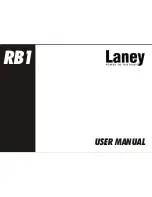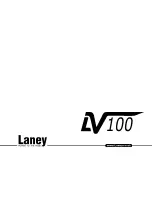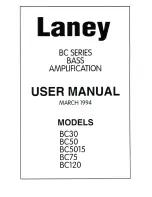
6
Warnings and Recommendations
Warning:
The Yagi antenna must always be located so the back or side points
to the inside antenna. Never point the front of the Yagi antenna toward
the inside antenna – oscillation will result, causing amber light and gain
reduction.
Warning:
The outside antenna must be installed on an outdoor permanent structure
with a separation of at least 20 feet from all persons during normal
operation.
Warning:
Connecting the amplifi er directly to the cell phone with use of an adapter
will damage the cell phone.
Warning:
Connect both the outside and inside antenna cables to the amplifi er
before powering up the amplifi er.
Warning:
Use only the power supply provided in this package. Use of a non-
Wilson product may damage your equipment.
Warning:
RF Safety
: FCC regulations require that any antenna (inside or outside)
used with this amplifi er may not have gain that exceeds 15 dBi. All
Wilson Antennas meet this requirement. Inside antennas must have at
least 8 inches of separation from all persons. Outside antennas must be
farther than 39 inches from all persons.
Lightning protection is recommended for all in-building installations.
Finding Signal Strength and Calculating Coverage Distance
Signal strength and the corresponding coverage distance you can expect to achieve
with your amplifi er/antenna system are based on a combination of several factors:
the received signal strength of your cell phone alone, the signal gain achieved by
your amplifi er and antennas and the signal loss from cables, taps and splitters you
may be using.
To calculate your approximate signal coverage distance, you can enter this
information into our Coverage Area Calculator on the Technical Support page on our
website (www.wilsonelectronics.com). If you prefer, you can manually calculate your
approximate signal coverage distance.
First, measure the Outside Signal Level (OSL) at the intended outside antenna
location using a cell phone in test mode. (For assistance, visit the Phone Test
Modes section on the Technical Support page on our website or call 866-294-1660.)
The OSL will always be a negative number. (Even if the cell phone shows a positive
number, you will need to change it to a negative for this calculation.) Maximum
signal strength is usually about -50. When the signal weakens to about -100 or
worse, the call may be dropped.
Your inside and outside antennas will also add signal gain, again depending on
the antenna models you are using. You will also experience some signal
loss
from
cables, splitters and taps used to connect your system.


























